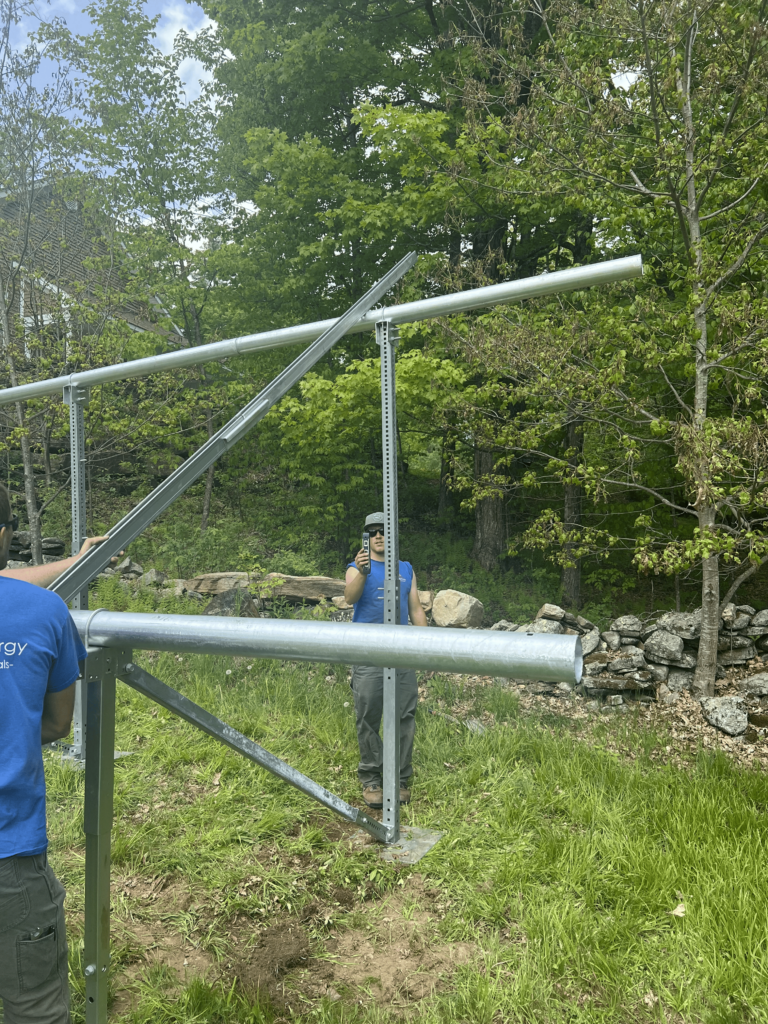Discovering Cost-Effective Solar Solutions: Innovative Racking Systems for Every Need
As the demand for renewable energy rises, solar power has become an increasingly popular choice for residential and commercial properties. A critical component of any solar installation is the racking system, which secures and supports the solar panels. Choosing the right racking solution can significantly impact energy efficiency, installation costs, and long-term performance. This article will explore various solar racking options, including ballasted ground mount solar, fixed tilt racking, earth anchor solar racking, distributed solar racking, and low-cost solar racking.
The Importance of Solar Racking Systems
Solar racking systems provide the structural support necessary for solar panels to function effectively. They ensure panels are positioned correctly to capture sunlight while withstanding environmental factors like wind and snow. Selecting the appropriate racking system can enhance the longevity and efficiency of your solar installation, making it essential to understand the different options available.
1. Ballasted Ground Mount Solar
Ballasted ground mount solar systems utilize heavy materials to secure solar panels without deep ground penetration. This method is particularly beneficial for sites where soil disturbance is a concern or drilling is impractical.
Advantages of Ballasted Ground Mount Solar
- Minimal Ground Disturbance: Since these systems don’t require deep excavation, they preserve the natural landscape and are less invasive to the environment.
- Easier Installation: Because there are fewer components and no need for concrete footings, the installation process is often quicker and more straightforward.
- Flexibility: Ballasted systems can be easily relocated, ideal for temporary or transitional projects.
This type of racking solution is an excellent choice for various applications, including commercial installations, open fields, or sites with challenging terrain.

2. Fix Tilt Racking
Fix tilt racking is one of the most commonly used solar racking systems. It holds solar panels at a predetermined angle, optimizing them for sunlight exposure throughout the year.
Benefits of Fix Tilt Racking
- Cost-Effectiveness: Fixed tilt systems’ simplicity often translates to lower installation costs than more complex tracking systems.
- Low Maintenance: These racking systems require minimal upkeep, ensuring they are reliable over the long term.
- Durability: With fewer moving parts, fix tilt racking is less prone to mechanical failures, providing a stable solution for solar panel installations.
Ideal for residential and commercial applications, this straightforward racking option continues to be a popular choice for solar installers.
3. Earth Anchor Solar Racking
Earth anchor solar racking systems utilize anchors driven into the ground to secure solar panels. This approach is beneficial for installations in areas with unstable soil or where traditional concrete footings would be challenging to implement.
Key Features of Earth Anchor Solar Racking
- Stability: By anchoring the system directly into the ground, these racks enhance stability in windy conditions, reducing the risk of panel displacement.
- Versatility: Earth anchor systems can be adapted for various terrains, making them suitable for flat and uneven surfaces.
- Reduced Concrete Usage: This method minimizes the need for concrete, which can lower costs and reduce environmental impact.
Earth anchor solar racking offers a reliable and effective solution for sites with unique soil conditions or limited space.
4. Distributed Solar Racking
Distributed solar racking refers to systems that allow solar panels to be installed in multiple locations rather than a centralized array. This approach benefits organizations looking to maximize their energy generation potential across several sites.
Advantages of Distributed Solar Racking
- Maximized Energy Production: By strategically placing panels in optimal locations, distributed systems can capture more sunlight, increasing energy output.
- Scalability: These systems can be easily expanded as energy needs grow, allowing for flexible energy management.
- Centralized Monitoring: Many distributed systems come equipped with monitoring technologies, enabling users to track performance and optimize energy generation.
This racking solution is ideal for businesses, utilities, or communities implementing a comprehensive solar strategy.
5. Low Cost Solar Racking
Low cost solar racking systems provide affordable solutions for solar panel installation without compromising quality or efficiency. These systems often use simpler designs and materials to reduce overall costs.
Features of Low-Cost Solar Racking
- Affordable Options: These systems are designed to offer budget-friendly alternatives, making solar energy accessible to a broader audience.
- Simplicity in Design: With fewer components and straightforward installation, low-cost racking can reduce labor costs associated with installation.
- Efficiency: Despite being budget-friendly, many low-cost systems provide efficient energy production and durability.
For homeowners and businesses on a budget, low-cost solar racking can be an excellent way to invest in renewable energy without breaking the bank.
Conclusion
Selecting the right solar racking system is crucial for optimizing the performance and efficiency of your solar installation. With options like ballasted ground mount solar, fix tilt racking, earth anchor solar racking, distributed solar racking, and low cost solar racking, you can find a solution that meets your specific needs and site conditions. By understanding the unique benefits of each racking system, you can make an informed decision that enhances your solar investment and contributes to a more sustainable future. Investing in a reliable racking system improves energy efficiency and supports the global transition to clean, renewable energy sources.
